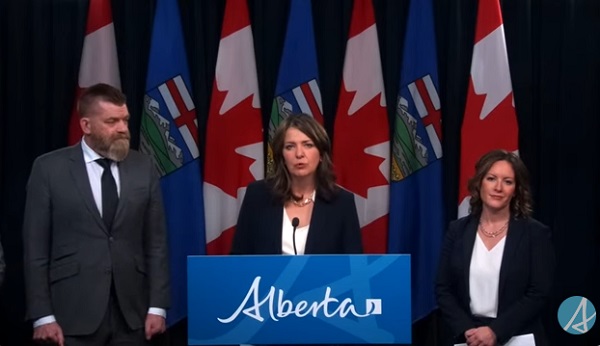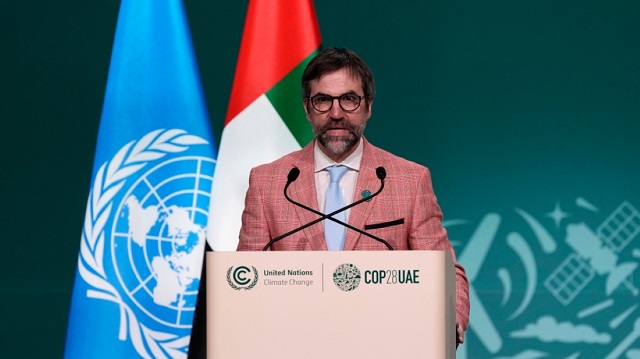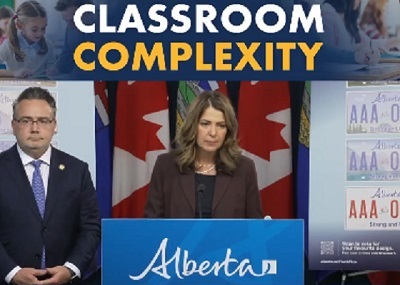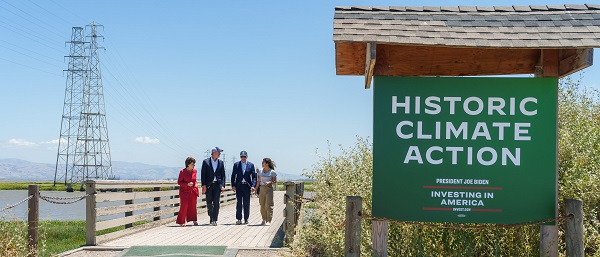Alberta
Protecting Alberta’s economic future from Ottawa

Alberta’s government will introduce an Alberta Sovereignty Within a United Canada Act motion to fight back against the unconstitutional, job-killing federal emissions cap.
The proposed oil and gas emissions cap is in reality a federal government-imposed cap on oil and gas production and, if implemented, will result in a production cut of at least one million barrels a day of oil and gas in Alberta, while effectively prohibiting any production growth.
The Canadian constitution clearly gives provinces exclusive jurisdiction over non-renewable natural resource development. Multiple reports have shown an emissions cap will kill 150,000 jobs, devastate Alberta’s economy, cut production, and hurt Albertans.
Yet, on Nov. 4, the federal government introduced draft regulations for an oil and gas emissions cap, ignoring concerns from many provinces, industry, businesses and Albertans.
In response, Alberta’s government will introduce an Alberta Sovereignty Within a United Canada Act motion to stop a federal cap from infringing on the province’s distinct jurisdiction and killing good-paying jobs. The resolution asks the legislative assembly for approval to take a series of swift, effective actions designed to protect Alberta if the production cap ever becomes law.
“We will continue to defend our province from Ottawa’s senseless and direct attack. Our motion protects Albertans’ jobs and livelihoods, puts Ottawa back in their place, and ensures we can continue to support global energy security with Alberta oil and gas for decades to come.”
Independent analysis by the Conference Board of Canada, Deloitte and S&P Global all show the devastating impact of the federal government’s proposed oil and gas emissions cap. This includes cutting production by one million barrels a day by 2030 and draining billions from Canada’s economy. In addition, the Conference Board of Canada estimates that up to 150,000 Canadian jobs could be lost as a result of the cap. As a result of these – and other – impacts, the average Canadian family would have up to $419 less for groceries, mortgage payments and utilities every month.
“This cap is not actually about emissions. This is about the federal government wanting to cut oil and gas production and control our energy sector, even if it costs thousands of jobs and hurts Canadians from coast to coast. We are standing up for our province and protecting Albertans from this extreme federal overreach.”
If passed, the actions proposed in the Alberta Sovereignty Within a United Canada Act motion will help protect Alberta’s economy while the province continues producing responsible energy to meet the world’s growing demands.
The motion proposes that the government launch an immediate constitutional challenge when, or if, the federal production cap becomes law. It also instructs the government to consider passing legislation, amending provincial regulations or taking whatever other steps are needed to:
- Ensure that no provincial entity participates in the enforcement or implementation of the federal cap.
- Ensure that all interest holder oil and gas production facilities and related infrastructure in Alberta (Interest Holder Facilities) are ‘essential infrastructure’ subject to the protections granted under Alberta’s Critical Infrastructure Defence Act.
- Prohibit entry by any individual, including any federal official or contractor, onto any Interest Holder Facilities, excepting any interest holders, employees and contractors, and those specifically licensed to enter by the Government of Alberta.
- Declare all information that is directly or indirectly related to greenhouse gas, collected at Interest Holder Facilities, as proprietary information exclusively owned by the Government of Alberta, and mandate that all emissions data be reported and disclosed at the province’s discretion.
- Effectively sell conventional oil through the Conventional Oil Royalty-in-Kind program, and work collaboratively with industry to implement a Bitumen Royalty-in-Kind program for bitumen, and develop a similar program for natural gas, if necessary.
- Work collaboratively and proactively with other provinces and territories, the United States and First Nations to double oil and gas pipeline capacity to tidewater and the United States of America.
If the motion is passed, Alberta’s government will immediately begin taking steps to be ready to protect the province if the federal regulations become law.
Quick facts:
- Alberta has repeatedly expressed that the federal cap is unconstitutional and impermissibly intrudes into an area of exclusive provincial jurisdiction as set out in section 92A of the Constitution Act, 1867.
- The Conference Board of Canada forecasts that royalties in Alberta will drop by $2-4 billion in 2030-31 under the emissions cap.
- Deloitte forecasts a $26 billion cut to Canada’s overall GDP in 2035, including a $16 billion decline in the GDP produced by oil and gas. It forecasts a five per cent decline in revenue for Alberta by 2035.
- Via the ScraptheCap.ca, over 4,000 people have sent letters to their Members of Parliament and federal ministers, and there have been over 12 million views of the current video online.
- Albertans and Canadians can continue to use the website to send letters.
Related information
Alberta
Diploma Exams Affected: No school Monday as ATA rejects offer of enhanced mediation

Premier Danielle Smith, Minister of Finance Nate Horner, and Minister of Education Demetrios Nicolaides issued the following statement.
“Yesterday, the Provincial Bargaining and Compensation Office wrote to the Alberta Teachers’ Association (ATA) and formally requested an agreement to enter an enhanced mediation process.
“This process would have ensured that students returned to the classrooms on Monday, and that teachers returned to work.
“Negotiating would have continued with the ATA, Teachers’ Employer Bargaining Association (TEBA) and a third-party mediator to propose a recommended agreement.
“We are very disappointed that the Alberta Teachers’ Association refused this offer. Teachers and students should also be disappointed.
“PBCO made this offer to the ATA because the union has not made a reasonable offer and this strike is impacting students. Alberta’s government is trying to put kids first and bring an end to this strike.
“The offer of enhanced mediation provided a clear path to ending it.
“We want the same things as the ATA: More teachers. More pay for teachers. More educational assistants. And more classrooms.
“This strike has gone on too long and we are extremely concerned about the impact it is having on students.
“We are willing to consider further options to ensure that our next generation gets the world-class education they deserve. After about three weeks, a strike of this nature would reach the threshold of causing irreparable harm to our students’ education.
“The ATA needs to do what is right for its members, and for all Alberta students.
“If it refuses to do so, we will consider further options to bring this strike to an end.”
Diploma exam update
November diploma exams will be optional for students.
With instructional time in schools disrupted due to the teacher strike, the November 2025 diploma exams will now be optional for students. Students who wish to write a diploma exam may request to do so, and their school boards will accommodate the request.
The optional diploma exams apply to all schools provincewide. These exams will still take place on the currently scheduled dates.
Students who choose not to write the November diploma exams can still complete their courses and graduate on time. Their final grade will be based entirely on the school-awarded mark provided by their teacher.
Choosing not to write the November diploma exams will not affect a student’s ability to apply to, be accepted by, or attend post-secondary institutions after graduation.
No changes have been made to the January and June diplomas and provincial achievement tests.
Quick facts
- Students are automatically exempted from writing the November diploma exams but can request to write them.
- School boards must allow the student to write the diploma exam if requested.
Alberta
Alberta taxpayers should know how much their municipal governments spend

From the Fraser Institute
By Tegan Hill and Austin Thompson
Next week, voters across Alberta will go to the polls to elect their local governments. Of course, while the issues vary depending on the city, town or district, all municipal governments spend taxpayer money.
And according to a recent study, Grande Prairie County and Red Deer County were among Alberta’s highest-spending municipalities (on a per-person basis) in 2023 (the latest year of comparable data). Kara Westerlund, president of the Rural Municipalities of Alberta, said that’s no surprise—arguing that it’s expensive to serve a small number of residents spread over large areas.
That challenge is real. In rural areas, fewer people share the cost of roads, parks and emergency services. But high spending isn’t inevitable. Some rural municipalities managed to spend far less, demonstrating that local choices about what services to provide, and how to deliver them, matter.
Consider the contrast in spending levels among rural counties. In 2023, Grande Prairie County and Red Deer County spent $5,413 and $4,619 per person, respectively. Foothills County, by comparison, spent just $2,570 per person. All three counties have relatively low population densities (fewer than seven residents per square kilometre) yet their per-person spending varies widely. (In case you’re wondering, Calgary spent $3,144 and Edmonton spent $3,241.)
Some of that variation reflects differences in the cost of similar services. For example, all three counties provide fire protection but in 2023 this service cost $56.95 per person in Grande Prairie County, $38.51 in Red Deer County and $10.32 in Foothills County. Other spending differences reflect not just how much is spent, but whether a service is offered at all. For instance, in 2023 Grande Prairie County recorded $46,283 in daycare spending, while Red Deer County and Foothills County had none.
Put simply, population density alone simply doesn’t explain why some municipalities spend more than others. Much depends on the choices municipal governments make and how efficiently they deliver services.
Westerlund also dismissed comparisons showing that some counties spend more per person than nearby towns and cities, calling them “apples to oranges.” It’s true that rural municipalities and cities differ—but that doesn’t make comparisons meaningless. After all, whether apples are a good deal depends on the price of other fruit, and a savvy shopper might switch to oranges if they offer better value. In the same way, comparing municipal spending—across all types of communities—helps Albertans judge whether they get good value for their tax dollars.
Every municipality offers a different mix of services and those choices come with different price tags. Consider three nearby municipalities: in 2023, Rockyview County spent $3,419 per person, Calgary spent $3,144 and Airdrie spent $2,187. These differences reflect real trade-offs in the scope, quality and cost of local services. Albertans should decide for themselves which mix of local services best suits their needs—but they can’t do that without clear data on what those services actually cost.
A big municipal tax bill isn’t an inevitable consequence of rural living. How much gets spent in each Alberta municipality depends greatly on the choices made by the mayors, reeves and councillors Albertans will elect next week. And for Albertans to determine whether or not they get good value for their local tax dollars, they must know how much their municipality is spending.
-

 espionage2 days ago
espionage2 days agoBreaking: P.E.I. Urges RCMP Probe of Alleged Foreign Interference, Money Laundering
-

 Business19 hours ago
Business19 hours agoCanada has an energy edge, why won’t Ottawa use it?
-

 Alberta2 days ago
Alberta2 days agoPremier Smith addresses the most important issue facing Alberta teachers: Classroom Complexity
-

 Business19 hours ago
Business19 hours agoFederal Budget 2025: A responsible media would ensure Canadians know about the dismal state of federal finance
-

 Alberta2 days ago
Alberta2 days agoAlberta taxpayers should know how much their municipal governments spend
-

 Business1 day ago
Business1 day agoCutting Red Tape Could Help Solve Canada’s Doctor Crisis
-

 Daily Caller1 day ago
Daily Caller1 day agoTrump, Putin Agree On High-Stakes Meetings To Negotiate End To Ukraine War
-

 International7 hours ago
International7 hours agoPoland’s president signs new zero income tax law for parents with two children





